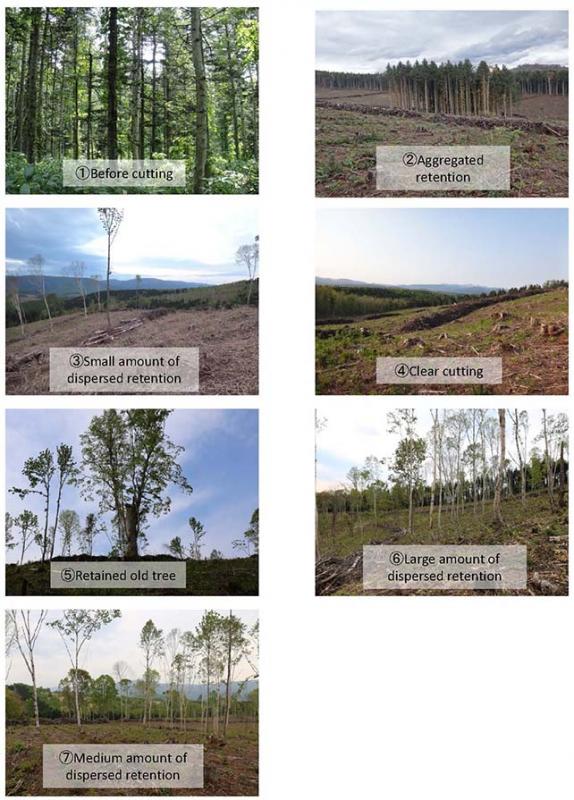Home > Research > Research Results > Research Results 2020 > Research for different impressions on "appearance "of cutting areas, and utilizing them in forest management
Update:September 7, 2020
Main content starts here.
Research for different impressions on "appearance "of cutting areas, and utilizing them in forest management
| Article title |
Cognition and Evaluation of the Public Regarding Final Cutting methods |
|---|---|
| Author (affiliation) |
Norimasa Takayama (a), Sato Sanai (b), Yuichi Yamaura (c)(d) (a) Administration Bureau, FFPRI, Tsukuba, Ibaraki, Japan. (b) University of Tsukuba, Tsukuba, Ibaraki, Japan. (c) Shikoku Research Center, FFPRI, Kochi, Japan. (d) Fenner School of Environment and Society, The Australian National University, Canberra, Australia. |
| Publication Journal |
Journal of the Japanese Forest Society, vol. 102(3), pp.180-190, (in Japanese with English Summary) |
| Content introduction |
Impressions of the "appearance" of a forest vary depending on a person's perspective, and that has a significant effect on how that person values the forest. Therefore, foresters should have a thorough understanding of the kinds of impressions that people with an interest in forests have on a logging area. However, so far there has been almost no research conducted on differences of impressions, especially as they pertain to cut areas. Therefore, we took photographs of various types of cut areas in plantations of Sakhalin fir trees (Abies sachalinensis) in Hokkaido, and conducted a survey about the impressions that people with no specialized knowledge ("non-specialists") and researchers who specialize in forests ("specialists") have on the appearance of these photos. As a result, we found that non-specialists had a positive impression of clear cut areas and old broadleaved trees that remained in cut areas, but tended to have a negative impression of aggregates of Sakhalin firs that remained after cutting. Furthermore, their attitude towards cutting that is done in order to undertake forestry differed widely between the two groups. In order to resolve this issue, we found that it would be effective to provide information about the necessity of cutting as well as considerations about ecosystem preservation and other matters. The present study took a novel approach in analyzing the issue of how to compromise between the public benefit functions of forests (scenery, biodiversity) and the forestry industry, especially from the perspective of non-specialists. The results will be useful for taking ecosystems and the perspectives of tourists and local residents into account when considering cutting plans.
Photos: Seven states of forest stands were examined in the present study.Six of these were arranged into two types: clear cutting, in which all trees were cut, and selective cutting. Selective cutting was subdivided into 5 types: "aggregated retention", in which groups of trees were left in a square shape; "retained old trees", in which old broadleaved trees were left standing; and "small amount of dispersed retention", "medium amount of dispersed retention" and "large amount of dispersed retention", which depended on the amount of broadleaved trees that were left standing. The 7th state was "before cutting". Typical conditions of each of these groups were photographed and selected. (Some of the figures were reproduced from journal papers with the permission of the Japanese Forestry Society (JFS)). |
Copyright © Forest Research and Management Organization. All rights reserved.

